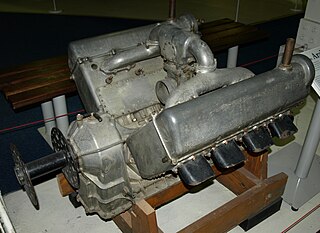
The Sunbeam Arab was a British First World War era aero engine.

The Armstrong Siddeley Leopard was a British 14-cylinder twin-row air-cooled radial aero engine developed in 1927 by Armstrong Siddeley. It was the most powerful radial engine in the world when introduced.

The Armstrong Siddeley Lynx is a British seven-cylinder aero engine developed by Armstrong Siddeley. It was developed as a single row version of the two-row Armstrong Siddeley Jaguar. Testing began in 1920 and 6,000 had been produced by 1939. In Italy Alfa Romeo built a 200 horsepower (150 kW) licensed version of this engine named the Alfa Romeo Lynx.

The Armstrong Siddeley Mongoose is a British five-cylinder radial aero engine produced by Armstrong Siddeley. Developed in the mid-1920s it was used in the Hawker Tomtit trainer and Parnall Peto seaplane amongst others. With a displacement of 540 cubic inches (9 litres) the Mongoose had a maximum power output of 155 horsepower (115 kilowatts).
Sunbeam, Wolverhampton, England, started to build aircraft engines in 1912. Louis Coatalen joined Sunbeam as chief engineer in 1909, having previously been Chief Engineer at the Humber company works in Coventry. The company quickly became one of the UK's leading engine manufacturers and even designed an aircraft of its own. Sunbeam discontinued the production of aircraft engines after Coatalen left the company in the 1930s.
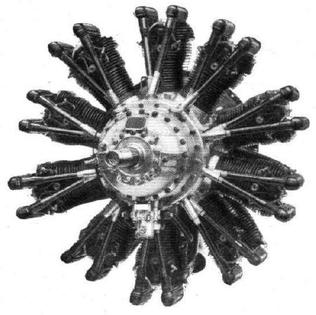
The Armstrong Siddeley Serval was a British ten-cylinder aero engine developed by Armstrong Siddeley in the late 1920s. Following company tradition, the engine was named for the serval.

The Sunbeam Dyak was a British inline six-cylinder, water-cooled, twin updraft carburettor engine.
The Sunbeam Crusader, originally known as the Sunbeam 150 hp, Sunbeam 110 hp or Sunbeam 100 hp, was an early British, side-valve, water-cooled, V-8 aero engine first marketed in 1913.

The Sunbeam Matabele was a British 12-cylinder aero engine that was first flown in 1918. The Matabele was the last iteration of one of Sunbeam's most successful aero engines, the Cossack.

The Sunbeam Manitou was an aero-engine produced by Sunbeam. Unsuccessful as an aero-engine, it is best known for having powered the Sunbeam 350HP racing car.
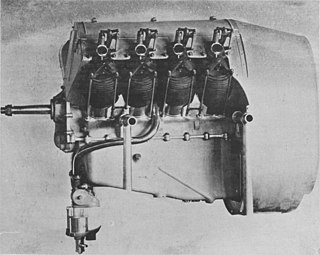
The Renault 70 hp or Type WB was a French V-8 aero engine that first ran circa 1907. It was also manufactured under license by Renault Limited of West Brompton, London between August 1914 and December 1918, three other companies, including Rolls-Royce, also produced the engine. A variant known as the Type WC used an external oil pump as opposed to the internal pump of the Type WB. The Renault V-8 engines were noted as inefficient but reliable, the inefficiency being mainly due to the excessively rich fuel/air mixture used to assist cooling.

The Daimler-Benz DB 602, originally known as Daimler-Benz LOF.6, was a German diesel cycle aero engine designed and built in the early 1930s. It was a liquid-cooled upright V16, and powered the two Hindenburg-class airships. It has roughly the same displacement and weight of the Beardmore Tornado, which was used in the ill-fated R101, but has almost twice the power of the Tornado, showing Daimler-Benz's superior knowledge regarding diesel engine construction.
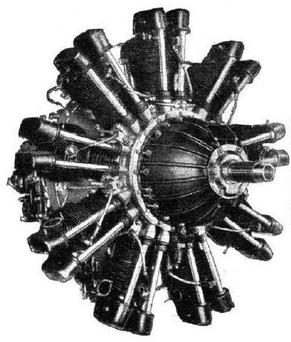
The Wolseley Aries III or A.R.9 was a British nine-cylinder, air-cooled radial aero engine that first ran in 1933, it was designed and built by Wolseley Motors. Intended for the military trainer aircraft market few were produced as Wolseley withdrew from the aero engine market in 1936.
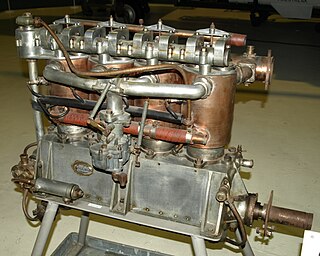
The Green C.4 was a British four-cylinder, water-cooled aero engine that first ran in 1908, it was designed by Gustavus Green and built by the Green Engine Co and Aster Engineering. The engine was one of two Green designs to win a government prize.
The Fiat AS.5 was an Italian 12-cylinder, liquid-cooled V engine designed and built in the late-1920s by Fiat especially for the 1929 Schneider Trophy air race.
The Sunbeam Pathan, also known as the Sunbeam P.1, was a 1920s British diesel aero engine.

The Sunbeam Cossack was a British 12-cylinder aero engine that was first run in 1916. The Cossack spawned a family of engines from Sunbeam.
The Sunbeam Afridi was an aero-engine produced by Sunbeam during the First World War.
The Sunbeam Nubian, also called the Sunbeam 155 hp, was a British 8-cylinder aero-engine that was first run in 1916.
The Sunbeam Spartan was a British 12-cylinder aero-engine designed and built in 1916.












